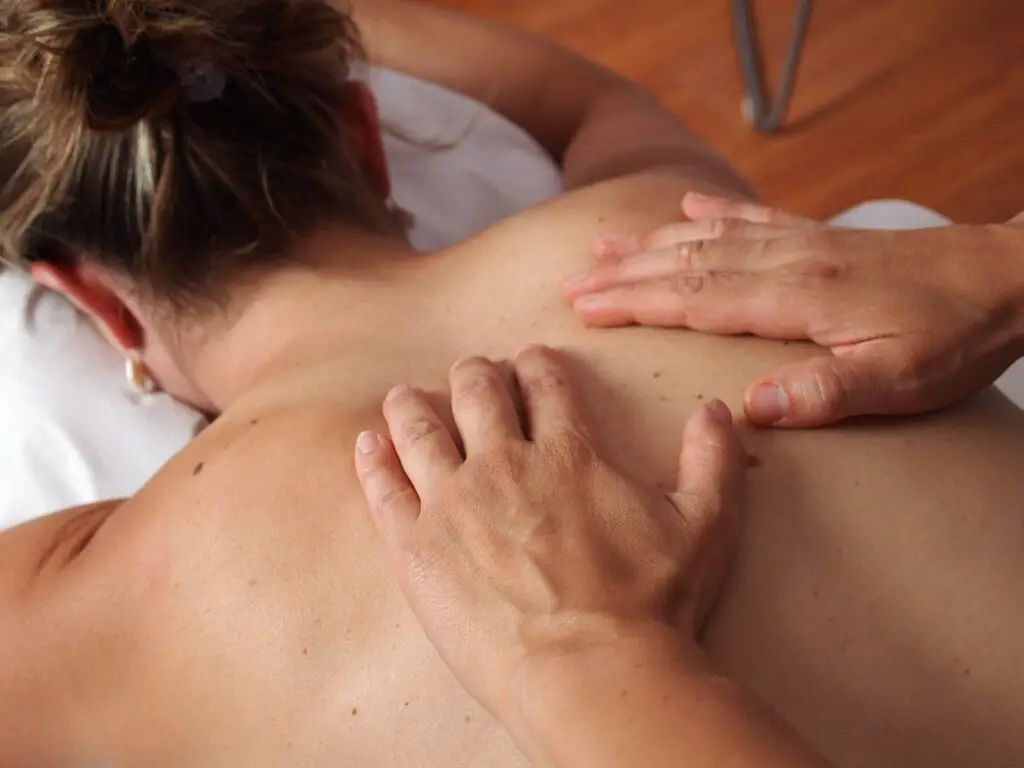There are different types of disc injuries that lead to back injuries. In general, most of them are the product of a degenerative process.
Herniated discs or osteochondrosis are examples of wear and tear injuries caused by time.. Today we should talk about one of them: protrusion or disc protrusion.
Index
Disco intervertebral
To understand what disc protrusion is, you must first understand the formation of the discs. Discs are structures located between the vertebrae. Your role is to protect it, as well as protect the nerves that come out between it and the joints in the area. The disc consists of three parts: nucleus pulposus, the annular fibrous nucleus and the intervertebral disc.
The fibers that make up the annulus deteriorate over time under the influence of pressure on the spine. This causes dehydration that leads to small tears., known as disc fissures.
When this condition persists over time, fibers inevitably deform and can no longer regenerate.
Disc protrusion
Disc protrusion occurs when the fibers begin to deform and bulge due to these stresses.. When it gets weak, the pulp nucleus deforms and pushes it back, causing the disc structure to deform.
Symptoms
As a degenerative process in the spine, bulging discs most commonly affect people over the age of 40 years. It is also very common that the symptoms do not appear.
Nevertheless, when the lump occurs in the area where the nerve passes, can cause back discomfort. The most common is cervical or lumbar pain depending on the location of the injury.
The pain usually radiates up the arm when the ankle is convex and down the leg at the waist.. If the injury compresses certain nerves, it can also cause loss of sensation or loss of strength.
Treatment
In general, most cases of disc inflammation improve positively with medications, physical therapy and gentle, controlled exercise.
In cases where the specialist decides that surgery is necessary, microsurgical excision is the most common surgery for this condition.
How is a bulging disc and a herniated disc different?
This is one of the most frequently asked questions. The main difference is in the work of the nucleus pulposus. When the colloidal component pushes and deforms the capsule, a bulge occurs.
Nevertheless, when this sheath breaks and the substance inside the nucleus leaves its zone, is when a herniated disc occurs.
In the convex part of the disc there is a partial tear of the fibers within the disc to allow the nucleus to move into the fissure, causing the nucleus pulposus (protoea). A disc protrusion may be asymptomatic, but it can also lead to narrowing of the canals through the nerves or the spine. A person may experience severe pain accompanied by muscle spasms and neuralgia in the area or in the arms or legs..
Disc bulge is a less significant lumbar disc herniation due to disc degeneration.
If the breakage of the fibers in the outer region of the disc is greater, can lead to partial expulsion of the nucleus. This process is called a herniated disc.. The most common are lumbar hernias between L4-L5 and L5-S1, and cervical between C5-C6 and C6-C7.
A herniated disc can put pressure on certain structures of the nervous system and cause pain that radiates to the lower or upper extremities. (etiology). The size of the hernia lump is not related to the patient's symptoms.
Both a bulge and a hernia will be diagnosed through the patient's medical history., physical examination and use of imaging tests, such as nuclear magnetic resonance (MRI). It should be noted that the appearance of a lump or a hernia on the images is not always directly related to the appearance of symptoms (4) (5). These are physiological processes of aging and degeneration that do not always lead to symptoms.. Therefore, diagnosis should not be based on imaging tests but on clinical symptoms, where progressive neurological signs are common.
Treatment of a disc pathology
Treatment is generally conservative, but we cannot forget that the treatment can turn into surgery and an emergency.
Surgery is only recommended when the patient loses sensitivity or power to the affected area, especially if the MRI shows a hernia to invade the nerve and space
electromagnetic is positive (degenerating to God Kinh Marca). Depending on the severity of the damage, You may need treatment in the pain unit if conservative treatments do not improve. As in any injury, we must always go from a less invasive treatment to an invasive treatment.
For pain radiating from nerve stimulation, the use of corticosteroids and vitamin B (incite or similar, only prescribed prescriptions and medical recommendations))
Regarding the treatment of restoration of hernia or ship discs, must perform mobilization techniques, muscle inhibitions, specific exercises to return the motors and control the muscle for the affected region, therapies on the behavior of consciousness, progressive relaxation, prolonged and neurodic mobilization. With these treatments, the patient improves the pain of lack of life and improves their quality of life. Treatment should always respect pain and progress, as well as return physical activity.
Finally, surgical treatment should only be done in case of nervous change or when previous treatments are not effective. Nevertheless, surgical treatment did not show higher efficiency and improved symptoms than managers, if we appreciate the long term, we need a bigger painkiller in which a good muscle house of the court has been made (2).
